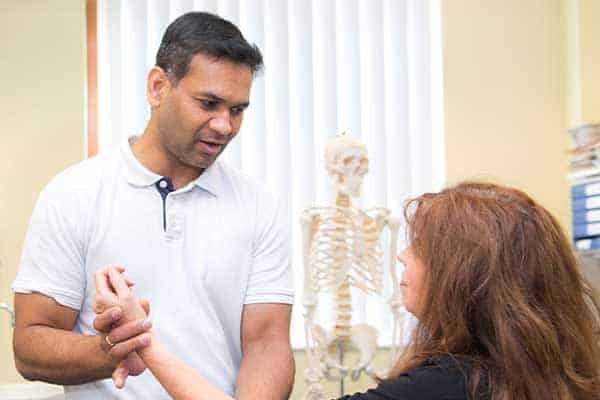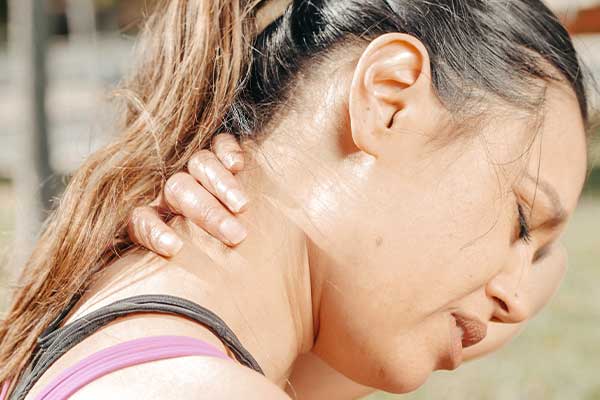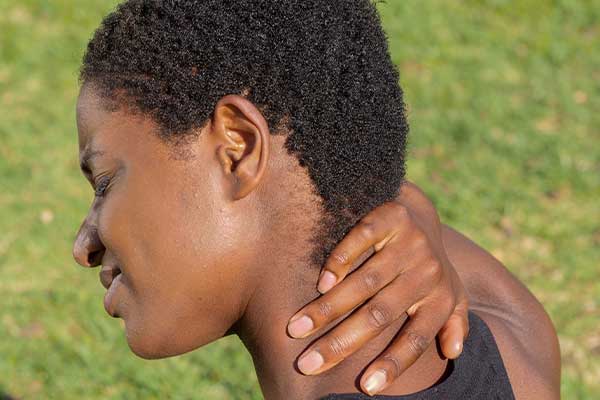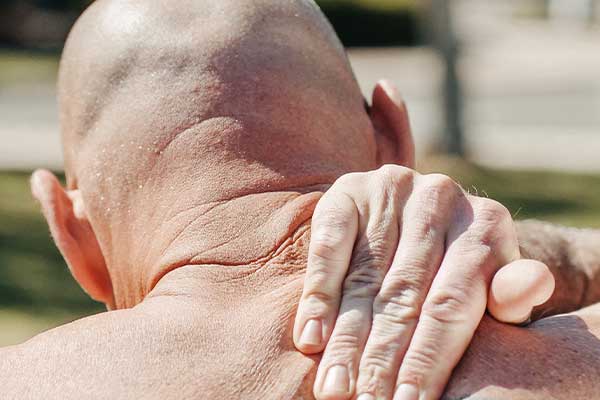Cervical spondylosis is a way of describing the pain that is often caused by normal wear and tear to the discs and bones in your neck. It is very common, particularly in older people.
What causes cervical spondylosis?
Cervical spondylosis is not caused by a trauma such as a fall or an impact. Rather it develops over time, as the joints between your neck bones roughen and the discs grow thinner. This causes the neck to become stiffer, less mobile and more painful.
What are the symptoms of cervical spondylosis?
For most people:
- Gradually, your neck grows stiffer and more painful to move.
- The pain is localised in your neck.
- The pain causes reduced range of movement.
For some people:
- You may experience numbness in an arm or hand.
- You may feel referred pain in your shoulder or upper back.
- You may experience a ‘click’ when you move your neck.
Usually, these symptoms are nothing to worry about. They are normal effects of ageing.
How is cervical spondylosis diagnosed?
Cervical spondylosis is usually suspected as the cause of symptoms like those listed above, particularly in older people. Your GP will typically use a physical examination or refer you for further tests to rule out other conditions and confirm the diagnosis.
What are the treatment options for cervical spondylosis?
It is important to realise that your neck and your spine are strong, stable structures and you will not damage them by moving them.
Using your joints as normal is the best way to keep them healthy. If you stop moving your neck, you are risking making your condition worse, not better.
The pain associated with cervical spondylosis can be relieved in several ways.
You could try some simple stretching and mobility exercises to get used to moving your neck freely again. Choose the easiest exercise for you and build up slowly.
Keeping your neck warm with a scarf can help with the pain and make your neck feel more ‘normal’. You could also apply gentle heat with a wheat bag or heat pack.
Paracetamol-based painkillers can help by enabling you to continue with your normal activities. Anti-inflammatory painkillers such as Ibuprofen can also be helpful in reducing pain. Ask your doctor or pharmacist for advice.
What is the prognosis (outlook) for cervical spondylosis?
While the actual physical changes to the structure of your neck cannot be reversed, it is possible to manage the pain and discomfort caused by cervical spondylosis.
However, you should seek medical advice if the pain gets much worse or if you experience the following:
- Pins & needles and/or numbness in both arms.
- Dizziness and/or fainting.
- Double vision.
- Trouble swallowing food.
How can I prevent recurrence of cervical spondylosis?
If you have managed to relieve some or all of the stiffness and pain associated with cervical spondylosis, the best way to stop it coming back is to continue with your exercises to maintain strength and mobility in your neck.
Avoid keeping your neck in the same position for a long time. Maintain a good posture and also remember to change your position regularly.
Use a firm mattress to sleep on and try to ensure that your head is at the same height as your body.
Never use a neck brace or collar unless you have been told to do so by a health professional.
Recommended exercises (click to expand):
Neck flexion, extension, sidebending and rotation
- Sit up straight with your shoulders back and down, looking straight ahead.
- Tilt your head to look down towards the floor.
- Tilt your head to look up towards the ceiling.
- Turn your head to look over your right shoulder.
- Turn your head to look over your left shoulder.
- Move your right ear towards your right shoulder.
- Move your left ear towards your left shoulder.
- Keep your shoulders down at all times.
Towel rotation
- Sit in an upright chair with a short rolled-up towel behind your neck and the ends on your chest.
- Take the left end of the towel in your right hand and the right end in your left.
- Hold your hands up in front of your neck (now your hands are not crossed over but the towel ends are).
- Rotate your head to the right while moving your right hand in the same direction, pulling the towel tight.
- Gently turn your head and right hand back and forth to the right. Your left hand should stay still.
- Repeat on the other side.
Isometric neck
- Sit on an upright chair or stool, looking straight ahead.
- Place the palm of one hand against your forehead, then gently push your head against your hand and hold.
- Place your hand on the back of your head, push your head against your hand and hold.
- Place your hand on the side of your head, gently push your head against your hand and hold.
- Place your other hand on the other side of your head, gently push your head against your hand and hold.
Neck retraction
- Kneel on all fours with your hands below your shoulders and your knees below your hips. Find a neutral position for your spine and head, looking down between your hands.
- Push the heels of your hands into the floor, making your shoulder blades flatten against your back.
- Gently press your tongue into the roof of your mouth and imagine a string attached to the back of your head, pulling it up.
- Keeping your head level and your gaze between your hands, move your head upwards until you make a double chin.
- Hold this position. Relax and repeat.
- Ensure that your back and neck stay in the neutral position.





